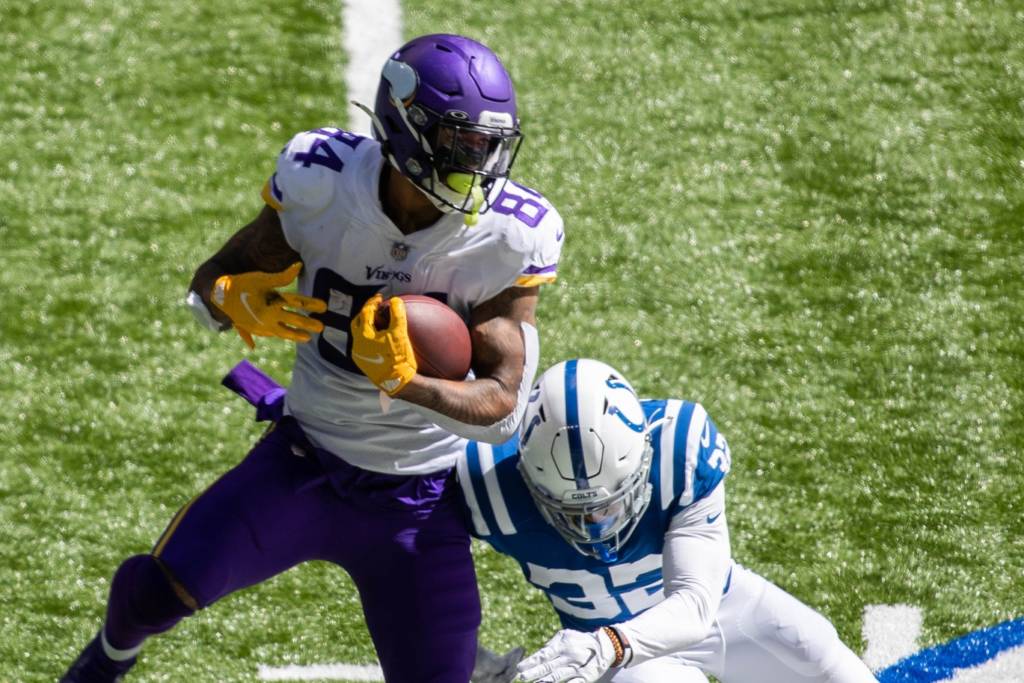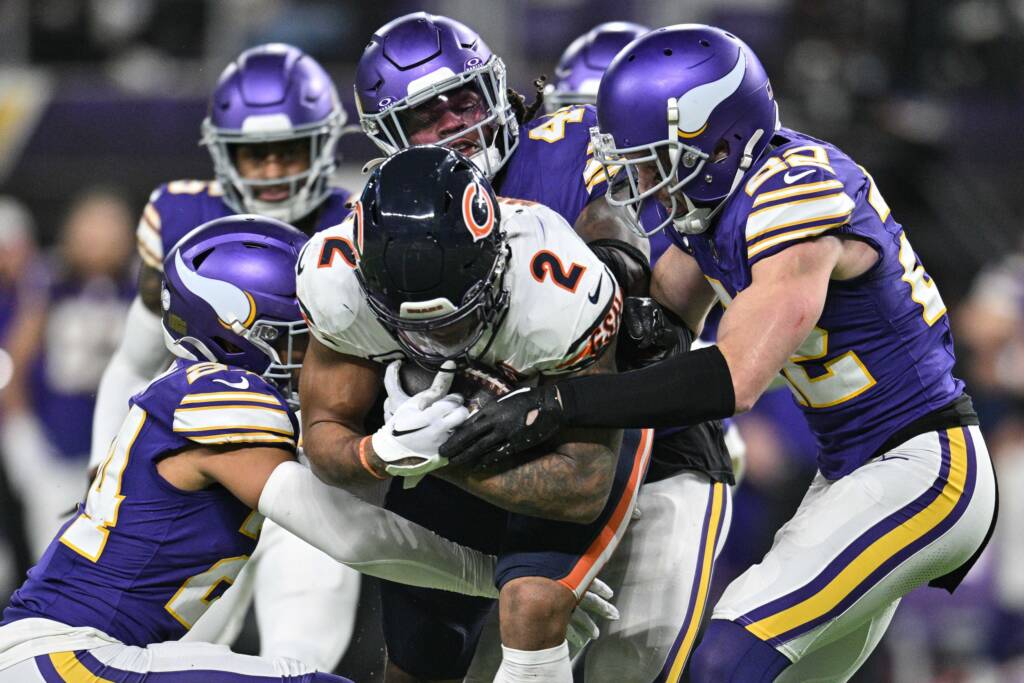If 2020 was a normal year and was going to include an ordinary Halloween at the end of this month with costume parties and stuff, children of all ages would already be making plans and pulling together the pieces needed for said costumes. And following the Minnesota Vikings’ first win of the season this past Sunday, some of the costume ideas being hatched by Twin Cities sports fans would undoubtedly include variations on a Vikings theme. Maybe a Mike Zimmer outfit with a headset and a face shield. Or Dalvin Cook with a chef’s hat — or, better yet, a superhero cape.
Meanwhile, the smart-alecks on the block would be pulling together a mash-up using their Irv Smith Jr. jersey and a “Where’s Waldo?” get-up. Or perhaps an oversized milk carton costume with Smith’s photo on the side. Older Vikings fans, go ahead and explain the whole missing person on the side of a milk carton deal to the younger fans in the room.
It’s never too soon to start making those costume plans, even if you’re just going to celebrate at home with the kiddos out of an abundance of caution. It’s also not too soon to wonder aloud just what the heck is going on with the Vikings’ second-year tight end.
This was supposed to be the year that Smith blossomed into a star. Instead, he’s pulled a disappearing act that would make David Blaine proud.
Smith was the Vikings’ second-round pick in 2019 (50th overall) and the heir apparent to Kyle Rudolph. He offers a smaller, sleeker, faster alternative at the position to Rudolph, the bigger target with sure hands. As a rookie, Smith flashed the ability to get open downfield and make the type of plays that led the Vikings to spend the kind of draft capital that they did. He wound up with only one fewer target and three fewer receptions than Rudolph, and there was every indication (or at least a widespread assumption) that the baton would be passed in 2020. It still might, but there have been zero hints of such a changing of the guard thus far.
A quick review of Smith’s first three games:
- One target, one reception for 11 yards against the Green Bay Packers. Played 60% of the offensive snaps.
- Four targets, one reception for three yards against the Indianapolis Colts on 65% of the snaps.
- No targets against the Tennessee Titans on 55% of the snaps.
- One target, zero receptions against the Houston Texans on 62% of the snaps.
He was held to one or zero targets only twice as a rookie while averaging just over three targets and 2.5 receptions per game. And in Weeks 9-12 last season he played 72%, 82%, 85% and 71% of the offensive snaps.
What’s going on?
Keep in mind that tight ends are notoriously slow to develop in the NFL, no matter their pedigree or how high they were drafted. It just takes time. But Smith is in Season 2 now and, honestly, there’s a chance he just isn’t playing as well as Vikings coaches would like. The game against the Colts, for example, included three incomplete passes intended for Smith and two penalties on him – one for offensive pass interference, plus a 15-yarder for an illegal crackback block. Not exactly a resume-builder. Since that performance, he has one target and zero catches. Maybe he needs to regain the confidence of the offensive coordinator Gary Kubiak and/or quarterback Kirk Cousins.
Nobody knows the answer to the curious case of Irv Smith Jr. outside of the Vikings’ headquarters at TCO Performance Center. And if asked directly, it’s doubtful you’d get a straight answer from any of the parties involved other than, “Irv is a good, young player with a bright future… blah, blah, blah.”
All we’re left with for now is speculation. Fortunately, speculation is a big part of what we do on sites like this.
Therefore, the best guess from yours truly is that it’s a combination of Smith’s development and performance and the change in play-calling. Remember, it was Kevin Stefanski at the helm as OC and calling the plays in 2019. The 2020 sample size is still small, but 2019 included more targets for tight ends as well as more passes to Cook – which is another mystery. Yeah, he’s been carrying the ball a lot the past two weeks, but Cook is one of the better pass-catching backs in the league and has only seven receptions through four games. That’s a 28-catch pace for a running back who caught 53 in 2019. That feels weird.
If nothing else, the lack of Cook in the passing game is yet another clue that there’s been a subtle shift in the play-calling.
In the 2020 version of the Vikings’ offense, if it’s not a handoff to Cook, it’s probably a pass to Adam Thielen or Justin Jefferson. Cook has 66% of the Vikings’ carries and 70% of the rushing yards. Thielen and Jefferson have 54% of the Vikings’ targets, 58% of the receptions and 72% of the receiving yards. That’s three players accounting for over 70% of the team’s yards from scrimmage.
It’s working pretty well so far, as the Vikings have reached 30 points in three of their four games, and Cook, Thielen and Jefferson are all having very good seasons. In fact, Cook has played at an All-Pro level, leading the NFL in rushing yards and touchdowns, and Jefferson and Thielen are ranked as the top two wide receivers by Pro Football Focus. Not the top two in the division or in the conference… the top two in the NFL. Not too shabby.
Now, they just need to translate these stellar performances into more wins.
Moreover, it might not be a bad idea to start diversifying the offense just a tad to avoid becoming too predictable. But I’m sure Zimmer and Kubiak know that. Opposing defenses will adjust, so counter-adjustments are required.
Which brings us back to Smith.
Who knows? Maybe it’s all just a set-up, and Zimmer instructed Kubiak to hold off on fully unleashing Irv upon the NFL until they didn’t see it coming. We can’t rule it out. That Zim is always playing 10-dimensional chess, you know. The element of surprise is lost if you reveal all your weapons too early.
On the other hand, if Smith’s absence from the offense continues much longer, the questions will grow louder. He’s either a perfectly potent weapon that they are letting go to waste, or he’s just not performing to a level yet that the draft capital expended on him would suggest he should be by Year 2.
There’s no need to abandon the jam-packed Smith bandwagon yet. However, his lack of usage is certainly something on which to keep an eye in the games ahead.

